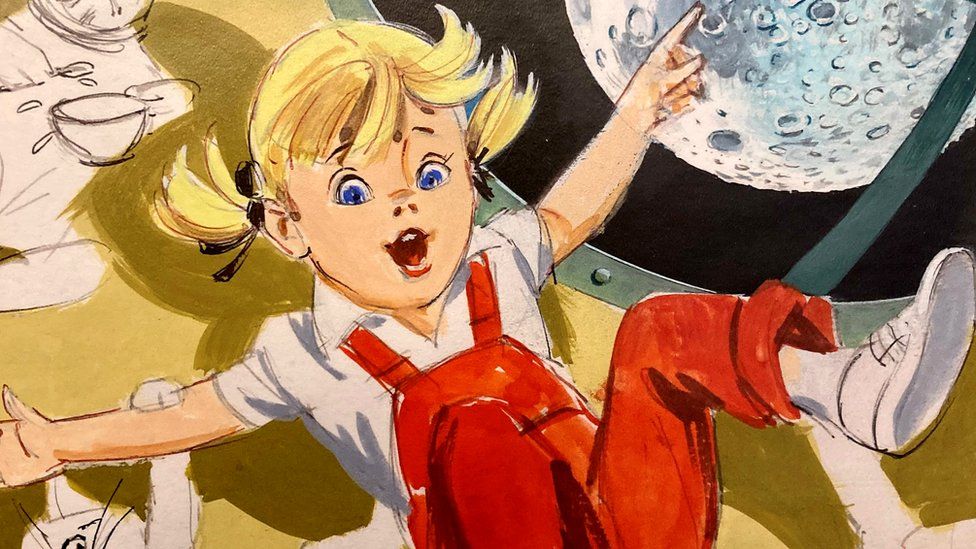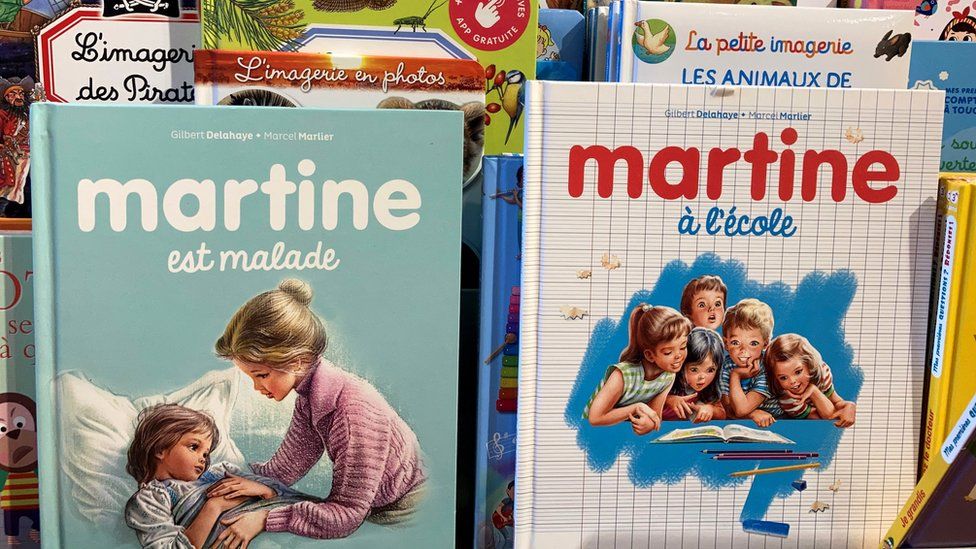Tuesday, December 21
Earth's Black Box

(Image credit: Shutterstock)
Every commercial flight you have ever taken has been recorded.
Every commercial flight you have ever taken has been recorded.
Every tug on the yoke and every adjustment of the throttle has been dutifully logged by a little recording device tucked away in the tail of the aircraft.
It's the infamous "black box" that search and rescue crews scan the crash site for any time an aviation incident occurs.
Its observations are a clear account of how the whole thing went down.
Next year, our planet will get one of these disaster recorders as well.
Next year, our planet will get one of these disaster recorders as well.
Called Earth's Black Box, the project is meant to painstakingly record every step on the way to our planet's demise. READ MORE...
Monday, December 20
Washing Rice
THERE ARE TWO TYPES of people in this world: Those who wash and those who do not wash their rice. Whether you belong to the former or the latter, the choice has a far more menacing consequence than just starchy grains.
Our world is ultra-convenient, and our food choices reflect this — dried pasta goes directly in boiling water, a can of black beans goes straight into chili. Rice enthusiasts, however, tend to insist the grain needs a little extra human touch. Specifically, rinsing the rice under cold water until the water runs clear. Rinsing rice can add significant time to your meal prep. In perhaps the most iconic love letter to rice in film, Jiro Dreams of Sushi, Jiro’s apprentice spends an hour preparing rice — starting with a solid rinse — for a plate of nigiri.
Some swear the rinse is what gives cooked rice its fluffy texture (not sure how sticky rice slots in here). But the stakes are far higher than guaranteeing a finished culinary masterpiece: Unwashed rice may be toxic.
WASHING RICE: THE NUTRITIONAL FACTS
Rice accounts for 20 percent of all the energy humans eat worldwide, according to one report. This is far more than wheat and maize, the key ingredients in bread and cornflour. Each grain of rice contains vital nutrients:
- Dietary fiber
- B vitamins like thiamine, riboflavin, and niacin: These keep your cells and organs running smoothly
- Carbohydrates
It may, however, help rid rice of toxic arsenic, a poisonous compound, according to Manoj Menon, an environmental soil scientist at the University of Sheffield.
In turn, scientists discovered that tweaking how you cook rice can help retain these nutrients. READ MORE...
Universe Expanding Faster Than Expected

This image from the Hubble Space Telescope features the spiral galaxy Markarian 1337, which is roughly 120 million light-years away from Earth. In 2006, astronomers saw a certain kind of supernova explode in this galaxy, providing researchers with some of the data nee...IMAGE BY ESA/HUBBLE & NASA, A. RIESS ET AL.
The latest measurements with the Hubble Space Telescope suggest the universe is expanding faster than scientists' models predict—a hint that some unknown ingredient could be at work in the cosmos.
It’s one of the biggest puzzles in modern astronomy: Based on multiple observations of stars and galaxies, the universe seems to be flying apart faster than our best models of the cosmos predict it should. Evidence of this conundrum has been accumulating for years, causing some researchers to call it a looming crisis in cosmology.
Now a group of researchers using the Hubble Space Telescope has compiled a massive new dataset, and they’ve found a-million-to-one odds that the discrepancy is a statistical fluke. In other words, it’s looking even more likely that there’s some fundamental ingredient of the cosmos—or some unexpected effect of the known ingredients—that astronomers have yet to pin down.
“The universe seems to throw a lot of surprises at us, and that’s a good thing, because it helps us learn,” says Adam Riess, an astronomer at Johns Hopkins University who led the latest effort to test the anomaly.
The conundrum is known as the Hubble tension, after astronomer Edwin Hubble. In 1929 he observed that the farther a galaxy is from us, the faster it recedes—an observation that helped pave the way toward our current notion of the universe starting with the big bang and expanding ever since.
Researchers have tried to measure the universe’s current rate of expansion in two primary ways: by measuring distances to nearby stars, and by mapping a faint glow dating back to the infant universe. These dual approaches provide a way to test our understanding of the universe across more than 13 billion years of cosmic history. The research has also uncovered some key cosmic ingredients, such as “dark energy,” the mysterious force thought to be driving the universe’s accelerating expansion.
But these two methods disagree on the universe’s current expansion rate by about 8 percent. That difference might not sound like much, but if this discrepancy is real, it means the universe is now expanding faster than even dark energy can explain—implying some breakdown in our accounting of the cosmos. READ MORE...
Tardigrades and Quantum Entanglement
 Quantum life: an electron microscope image of a tardigrade. (Courtesy: Elham Schokraie et al/PloS ONE 7(9): e45682/CC BY 2.5)
Quantum life: an electron microscope image of a tardigrade. (Courtesy: Elham Schokraie et al/PloS ONE 7(9): e45682/CC BY 2.5)Tardigrades are tiny organisms that can survive extreme environments including being chilled to near absolute zero. At these temperatures quantum effects such as entanglement become dominant, so perhaps it is not surprising that a team of physicists has used a chilled tardigrade to create an entangled qubit.
According to a preprint on the arXiv server, the team cooled a tardigrade to below 10 mK and then used it as the dielectric in a capacitor that itself was part of a superconducting transmon qubit. The team says that it then entangled the qubit – tardigrade and all – with another superconducting qubit. The team then warmed up the tardigrade and brought it back to life.
To me, the big question is whether the tardigrade was alive when it was entangled. My curiosity harks back to the now outdated idea that living organisms are “too warm and wet” to partake in quantum processes. Today, scientists believe that some biological processes such as magnetic navigation and perhaps even photosynthesis rely on quantum effects such as entanglement. So perhaps it is possible that the creature was alive and entangled at the same time.
In the preprint, the researchers say that the entangled tardigrade was in a latent state of life called cryptobiosis. They say they have shown that it is “possible to do a quantum and hence a chemical study of a system, without destroying its ability to function biologically”. READ MORE...
Sunday, December 19
So What About Christmas
Gift giving at Christmas is a Christian tradition that is widely practiced around the world. ... To Christians, the gifts given at Christmas are symbolic of the tributes made to the baby Jesus by the Three Wise Men after his birth during the story of the Nativity...
So, here is my concern...
So, here is my concern...
What about all those non-believers of any kind of religion, religious beliefs, and/or philosophies... why do they continuee to give gifts to each other on Christmas Day as if they were CHRISTIANS?
Several of the people I know including members of my immediate family (brothers, sisters, cousins, aunts, uncles, etc.) have told me that they are ATHEISTS but when it comes to Christmas, they buy and distribute gifts as if they were CHRISTIANS and not ATHEISTS at all.
Several of the people I know including members of my immediate family (brothers, sisters, cousins, aunts, uncles, etc.) have told me that they are ATHEISTS but when it comes to Christmas, they buy and distribute gifts as if they were CHRISTIANS and not ATHEISTS at all.
I don't spend much time thinking about this hypocrisy during the rest of the year, only around the Christmas Season... but if these people are going to subconsciously or consciously contradict their sworn beliefs during the Christmas Season, how easy will it be for them to contradict their beliefs during the rest of the year?
Obviously, this is a rhetorical question...
CNN Host is Puzzled
In a Post piece headlined, "The puzzle of Joe Biden’s unpopularity," Zakaria claimed Biden's low approval rating wasn't actually his fault, but that he was instead "paying the price" for being president during "complicated times."
"I find President Biden’s unpopularity puzzling. He is rounding out his first year in the White House with the lowest end of first-year approval ratings of any elected president in modern times with the exception of Donald Trump. Why?" Zakaria wrote.
He described Biden as "a genial, likable person," and noted that some of his policies were popular amongst Americans with even some Republican support, but also claimed that the country was doing "reasonably well" economically, despite record inflation, nationwide supply chain challenges and a labor shortage. IF YOU WANT TO READ MORE THEN CLICK ON...READ MORE...
"I find President Biden’s unpopularity puzzling. He is rounding out his first year in the White House with the lowest end of first-year approval ratings of any elected president in modern times with the exception of Donald Trump. Why?" Zakaria wrote.
He described Biden as "a genial, likable person," and noted that some of his policies were popular amongst Americans with even some Republican support, but also claimed that the country was doing "reasonably well" economically, despite record inflation, nationwide supply chain challenges and a labor shortage. IF YOU WANT TO READ MORE THEN CLICK ON...READ MORE...
https://www.foxnews.com/media/cnn-host-admits-puzzled-biden-unpopularity
Jailed for Praising Wrong Cricket Team
An Indian student has now spent nearly two months in jail for celebrating Pakistan’s victory in a cricket match. The BBC’s Rajini Vaidyanathan went to the northern Indian city of Agra to meet his family, and find out why lawyers are refusing to represent him. Produced by Shalu Yadav Filmed by Syed Shahryar & Ajay Bedi Edited by Aakriti Thapar.
PIcture Book of Heroines
 SIMONE PROBST COLLECTION,Caroline's adventures first hit the bookshops in 1953, closely followed by Martine
SIMONE PROBST COLLECTION,Caroline's adventures first hit the bookshops in 1953, closely followed by MartineDo you like your childhood heroine to be the type that catches outlaws in the Wild West, can re-plumb and re-roof an entire country home, and once survived a biplane crash in the Arctic?
Or would you rather a girl who cooks biscuits with Mum, enjoys sewing lessons and the occasional game of marbles, and whose idea of an adventure is taking the train to visit cousins in Normandy?
For nearly 70 years, Caroline and Martine have been rivals for the hearts of French schoolchildren.
If you were a more outdoors-type you would have gone for Caroline. She was the first to appear in 1953 for publisher Hachette.
Created by artist Pierre Probst, she wore red dungarees and led an adult-free existence with a gang of eight animal friends: two cats, three dogs, a bear, a lion and a panther.
Such was her success that a year later rival publishing house Casterman dreamed up Martine with artist Marcel Marlier.

Martine books are still on sale in French bookshops in the run-up to Christmas
But while Caroline lived in a magical world where cats drive cars and 10-year old girls can travel the countryside at the head of their own circus, Martine was firmly attached to the domestic apron-strings. READ MORE...
But while Caroline lived in a magical world where cats drive cars and 10-year old girls can travel the countryside at the head of their own circus, Martine was firmly attached to the domestic apron-strings. READ MORE...
https://www.bbc.com/news/world-europe-59644739
Saturday, December 18
Hypersonic Missiles
Imagine if a foreign country launched a nuclear attack on the continental United States and the Pentagon had only six minutes to respond. That’s the potential of a new generation of weapons on the horizon, according to a recent Rand Corp. report.
Rand is urging the United States, China, and Russia to form an agreement on how to handle hypersonic missiles, which travel at more than five thousand kilometers per hour (about 3,100 mph). Hypersonic weapons are more than five times faster than a regular cruise missile and would not be detected by U.S. air defense systems as early as ballistic missiles.
The United States, China, and Russia are all known to be close to achieving deployable hypersonic systems and are ahead of other countries, according to Rand.
“Hypersonic missile proliferation would increase the chances of strategic war,” said Richard Speier, lead author of Rand’s report, in a press release.
The speed forces quick military counter-decisions with potentially disastrous effect. “It would give nations an incentive to become trigger-happy,” he said.
The United States likely has less than a decade to counter the proliferation of hypersonic missiles, though they are not yet operational, according to the report. Current missile defense systems would not be effective at defending against hypersonic missiles, and Rand urges changes to the existing missile technology control regime to anticipate and address them.
Crunched for time with dire stakes, countries might adopt a so-called launch-on-warning doctrine, or they might just strike first. Without time to consult a traditional chain of command, nations might feel compelled to give the military command and control, increasing the likelihood of accidental war. Countries might also scatter their weapons in order to better respond, which would give terrorists greater opportunity to steal the weapons for themselves, the report said.
“None of these options is very good,” Speier said. To Know More About Hypersonic Missiles and Possible War, CLICK HERE...
Subscribe to:
Posts (Atom)































